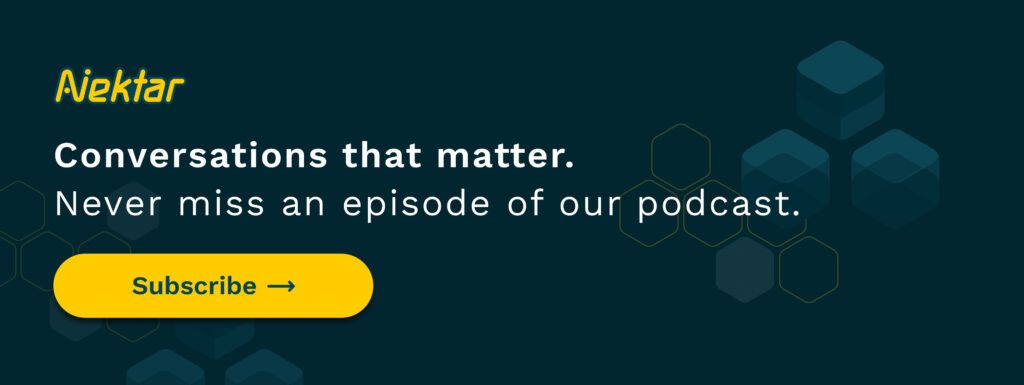To compensate for one lost customer, you need to acquire three new ones. Believe it when McKinsey says it.
Churn carries high costs with it. That’s why retention is a top priority for businesses today.
Yet, churn is on the rise, with 64% of companies expecting it to increase. What’s more surprising is that the issues behind churn can be managed or resolved. And as much as 96% of subscription businesses agree.
So, how can you uncover the real reasons behind churn, use buyer intelligence to reduce it, and improve growth?
Let’s find out.

What is Buyer Intelligence?
First things first, let’s have a clear understanding of the buyer intelligence concept.
Buyer intelligence analyzes past patterns to predict and direct future customer interactions.
It assesses ongoing customer data gleaned from omnichannel interactions. Then, it produces insights on these customers.
B2B buyer intelligence could look at a wide range of data, including but not limited to:
- Customer behavior
- Business goals
- Business challenges and priorities
- Purchase decision
- Successful use cases
- Communication
- Company background
- Segments
- Financial standing
The beauty of buyer intelligence is that it derives this information from several channels. After doing so, it combines and drives insights. Channels include emails, meetings, product usage, service consumption, and more.
Its primary goal is to enrich the CRM with complete and reliable data. This gives customer success managers (CSMs) the information to optimize future client interactions.
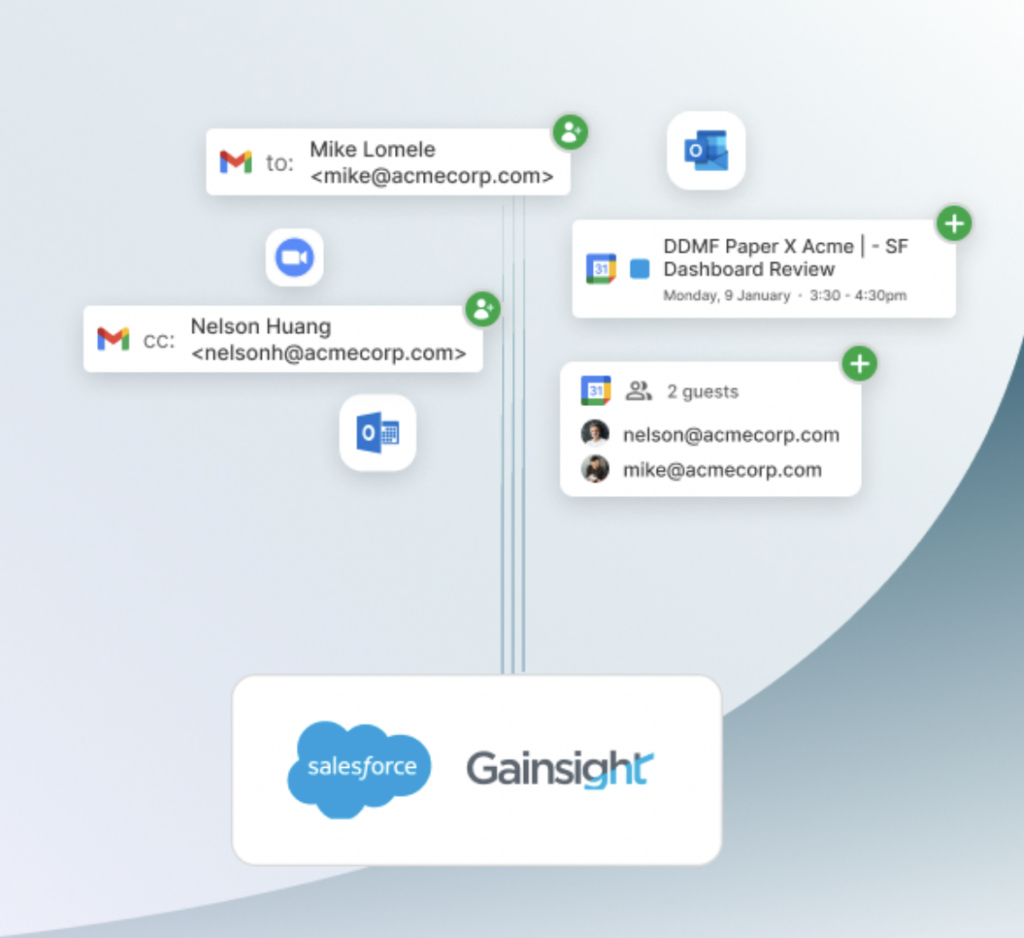
CSMs can use B2B buyer intelligence insights to not just look at customer behavior. They can also dive further into the buyer committee. They can verify contact data and messaging patterns to reach the right stakeholder at the right time.
Buyer intelligence is the key to solving emerging problems in customer experience today.
Emerging Customer Success Pain Points Resulting in Churn
Businesses are strategizing for resilient growth by concentrating on retention. And customer success plays a pivotal role in seeing this effort through.
But as the spotlight on customer success shines bright, so do its glaring problems. Notably, the last few years have thrown up multiple issues.
Some emerging pain points in customer success include:
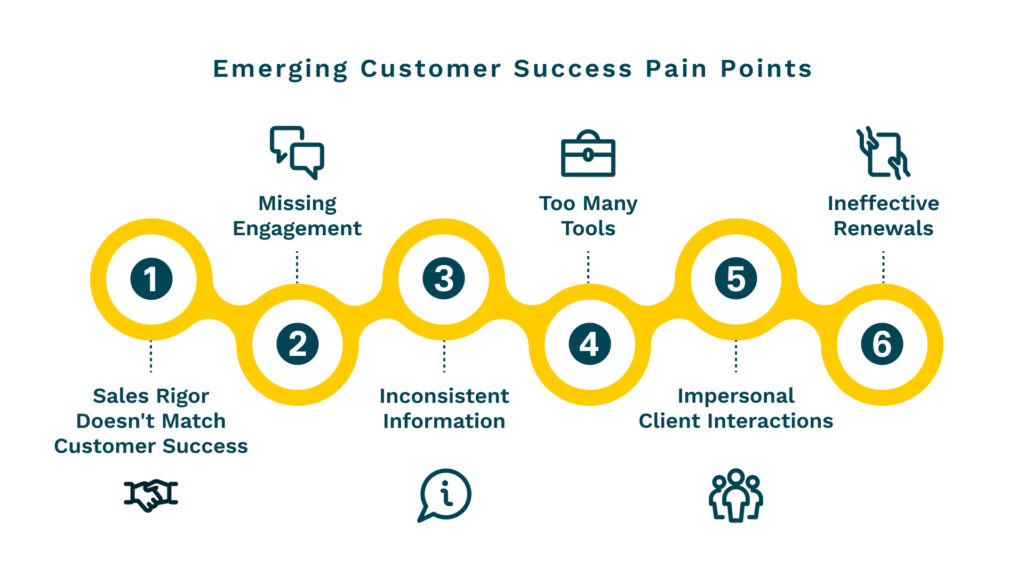
1. Customer success rigour doesn’t match sales
A singular focus on sales leads to rigorously planned workflows and playbooks. However, leaders don’t follow a similar rigor for customer success. This is despite businesses keeping client experience as their number one priority.
2. Missing engagement
Customer success talks to just one person (the champion) instead of engaging with the entire buyer group.
This is specifically important as buyer committees are more complex today. 82% of companies say that difficult purchases involve two to nine departments in the client’s company.
Other times, CSMs engage with the top 10% (best-performers) and lowest 10% of clients (at high risk of churn). But they miss the remaining customers. These left-out customers could have the potential to become a bigger account (expand) or feel overlooked and leave (churn).
3. Inconsistent information
At times, customer success doesn’t know what is happening in the client’s organization. They possess information that is incomplete, inaccurate, siloed, or non-compliant.
As a result, CSMs don’t know how to use the available information to strategize the next steps in the customer journey.
4. Too many tools
The global customer success platforms market is expected to grow more than double—from US$ 2.07 billion in 2023 to US$ 4.35 billion in 2027.
But this growth doesn’t necessarily spell a boon for CSMs. They may have too many tools to gather buyer intelligence from. And end up getting confused.
They may not know how to apply these tools to monitor customer behavior. Nor will they know how to help clients make the most of your solution.
On the other hand, these tools may also need extensive manual inputs. It becomes overwhelming for CSMs to keep up with the tools alongside other responsibilities.
5. Impersonal client interactions
As a result, CSMs can’t personalize communication for each account. Instead, they send generic messages and content for ongoing offers and new features, among other updates.
As much as 65% of customers don’t like the impersonal approach, expecting companies to adapt to their evolving preferences.
6. Ineffective renewals
Because CSMs don’t have complete information on clients, they hold renewal conversations closer to the due date. There’s no communication or relationship-building activity beforehand.
At this time, if you decide to increase costs without an intimation well in advance, customers may be discouraged from continuing with you.
The above pain points present a picture of ineffective customer success. What, then, is the effective version?
What Does Valuable Customer Success Look Like?
Effective customer success is when customers find value in their relationship with your business. And this value is strong enough for them to stick around.
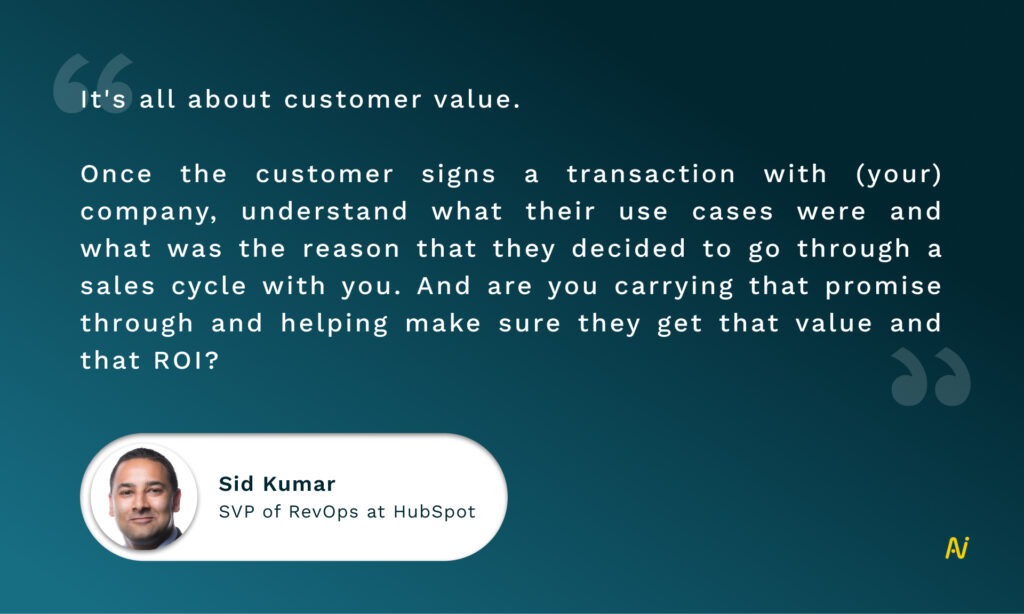
Customers assess value by determining their success since deploying your solution. They also look at the experience of working alongside your team.
If you deliver high-value experiences to your clients, they’re 3.5 times more likely to advocate for you.
But what could CSMs do differently to achieve this feat?
Effective CSMs use buyer intelligence to:
- Work with customers (not despite them) and
- Understand each buyer’s pain points, business goals, and KPIs.
They give customers the resources to be effective, achieve business goals, and feel confident in growth.
They don’t create strategies around short-term wins. They also optimize for long-term, sustainable growth.
You’ve seen the power of effective customer success. Now, let’s find out how you can build valuable relationships and reduce customer churn using buyer intelligence.
The Role of Buyer Intelligence in Reducing Churn
B2B buyer intelligence deliberately uses insights gathered from clean data to nurture customers. It enables them to grow with your business, encouraging the customer to associate their success with you.
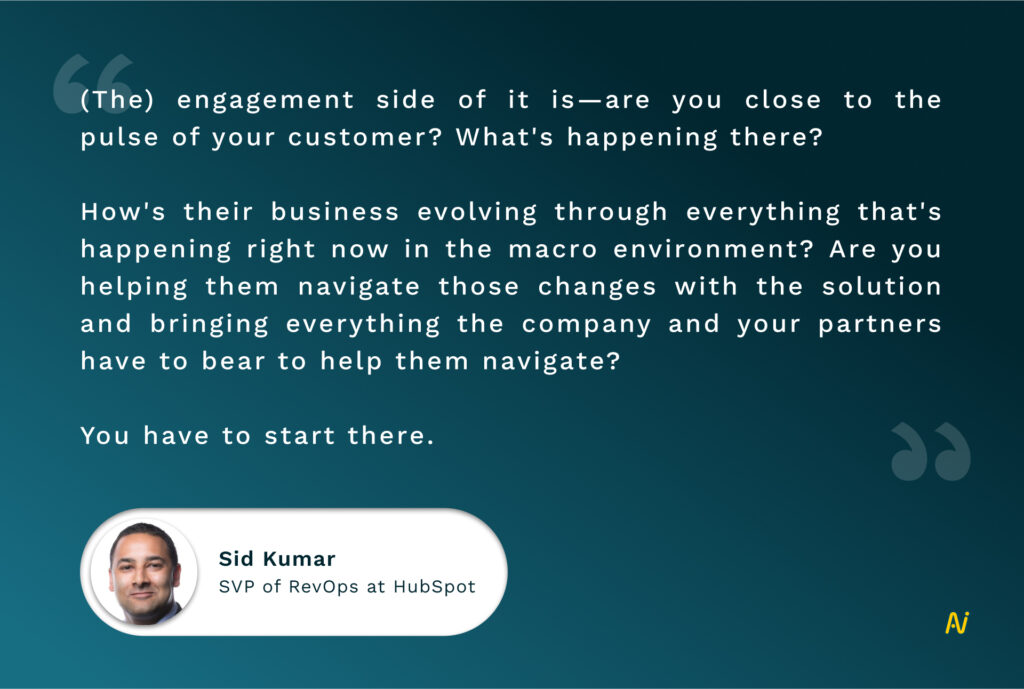
Here are six ways in which buyer intelligence could reduce churn:
1. Single-threaded to multithreaded accounts
Poor quality data leads to 56% of CRM users losing existing customers.
Owing to incomplete information, CSMs may know who is the day-to-day point of contact. However, they may not know who is involved in deploying and using your solution.
There could be multiple stakeholders involved in using your solution.
For instance, your champion may be a part of the IT team. But, extended users may include the finance, marketing, and legal departments.
Plus, new business and operational requirements may pop up.
This involvement naturally extends to the renewal process, too.
It becomes even more important to know who is part of the product usage process when the end user is not the same as the buyer. And therefore, the renewal committee may evolve and look much different than the original buyer committee.
Buyer intelligence adopts a granular approach, creating personalized user journeys for each stakeholder.
CSMs interact with all stakeholders in the renewal committee. They can not only identify individual pain points but also solve them.
You can also discover hidden renewal team members. B2B buyer intelligence enriches customer accounts with contact and account-level activity data.
These data points are gathered from multiple channels. You can scan connected tools, including Slack and video conferencing for relevant contacts.
With more complete information on each account, CSMs can easily monitor its breadth and depth to build a more precise account map.
2. Account prioritization
While CSMs identify all the stakeholders involved in each account, they also need to prioritize accounts to engage with. It helps you optimize resources across accounts rather than spreading them thin.
To identify which accounts are most likely to grow in value after continued engagement, you need clear visibility on:
- Account data on the company, people involved, intent level, and the overall account map.
- The day-to-day customer success activities.
- Engagement levels at contact and account levels.
- Top use cases for each account.
You can find out what each account and individual stakeholders are interested in and do a deep dive into their pain points.
Once you have these data points in place, it becomes easier to figure out the appropriate steps to deliver on (and even exceed) customer expectations. You can then guide them through the correct use cases with your product.
Your customer success team focuses on approaches that meet the renewal committee’s needs. They can share recommendations and let clients make decisions with higher confidence.
By incorporating account prioritization into customer success workflows, you can optimize your playbooks.
Finally, identify gaps where coaching could encourage CSMs to pursue the right accounts at the right time.
3. Churn risk prediction
The global benchmark for customer churn is 5%. Yet, 30% of companies face a churn rate much higher than that.
How can you differentiate yourself from them?
Buyer intelligence can help with predictive analytics.
Transform your customer success team from being reactive to proactive. Instead of chasing churn at the time of renewal, predict and prevent churn.
For most businesses, the top three measures for predicting churn are:
- Product usage data
- Indication of low engagement
- Customer health scores
Another reason for churn that should be widely discussed is champions leaving the client account. If a champion leaves, CSMs have to rebuild the relationship from scratch. Or else they could lose the account if they haven’t engaged with other stakeholders effectively.
Keep a close eye on the above four factors to predict churn.
You can identify at-risk accounts or churn opportunities to convert them to long-term clients.
One way in which AI helps is through alerts. You receive quick alerts when a champion leaves. Plus, you can track the champion’s movement. It lets you figure out if they’ve moved to another customer or lead account.
Relationship intelligence also shares predictive insights on who could be your alternative champion. So, you can start building a relationship with the backup champion even before your champion leaves.
Churn prediction identifies KPIs and engagement traits influencing churn the most. You can figure out the common patterns across your accounts and plan countermeasures.
Some examples of these patterns could be a drop in product usage for a particular audience segment. Or there could be an increase in tickets for specific product features.
At the same time, you can also monitor customer behavior relative to:
- Market changes
- Market awareness
- Economic, organizational, and structural changes
With the capability to predict churn, you can guide CSMs to take timely action to win back at-risk accounts.
They can identify next steps that are otherwise hidden in conversations. These could be over calls, video conferences, and emails. CSMs can then create incremental activities for improving customer experience.
Use churn prediction to determine winning engagement patterns and replicate them to optimize customer success interactions with clients.
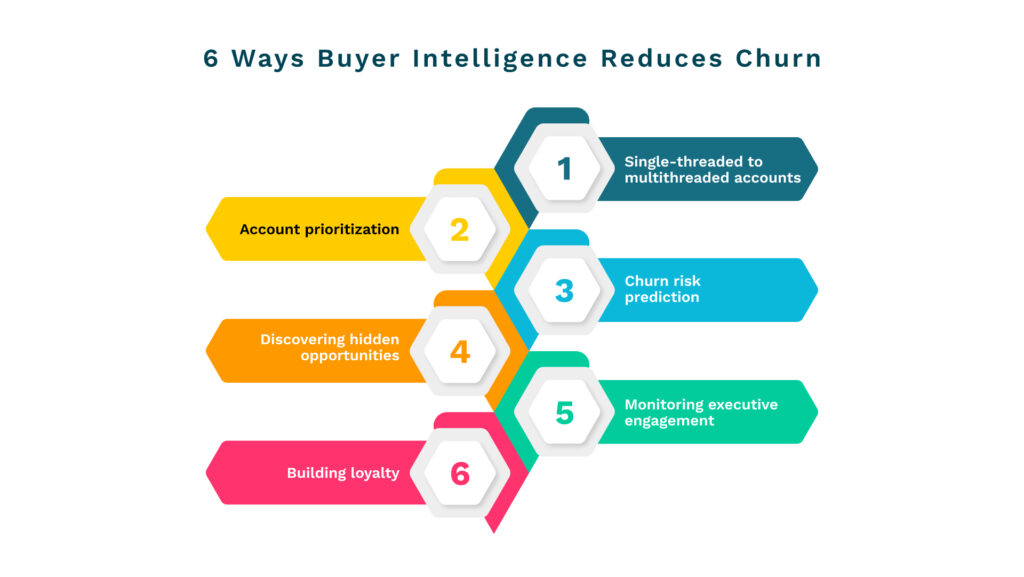
4. Discovering hidden opportunities
The more insights you have, the more expansion opportunities you can uncover.
Buyer intelligence can identify high-value opportunities. It then directs CSMs to the expansion opportunities that need attention sooner with explicit alerts for contacts.
For instance, sales may have engaged with a few stakeholders from a specific buyer account. However, once the deal is won, more stakeholders join the committee. They could be the ones deploying the solution. Also, they may have more use cases that weren’t discussed extensively during the sales process.
As a result, these stakeholders are new to the committee and heavily interested in seeing your product succeed.
Not having a complete picture of stakeholder needs leads to missed opportunities.
Use B2B buyer intelligence to determine the interaction quality with each additional committee member. Plus, you can check their engagement level with your content, product, or brand.
Active engagement means that you’re more likely to uncover potential expansion opportunities.
It’s not just for new stakeholders, in any case. Buyer intelligence also scans through historical data to discover any hidden insights.
Using these features, you can continue with buyer persona development for each account. As each stakeholder and the client company evolves, so does their persona. Monitor relevant changes to spot emerging opportunities.
For those champions that moved to another customer or target account, re-engage with them for further sales or expansion conversations.
5. Monitoring executive engagement
Other than guiding customer success to renewal and expansion, buyer intelligence also looks out for executive engagement.
It shares updates on upcoming quarterly business reviews (QBRs) or the meeting cadence that clients follow. You can automate sending invites to key executives and stakeholders in the renewal committee.
In addition to that, you get real-time alerts if an executive misses the meeting. If you notice a pattern developing with the same executive(s) giving the meetings a miss, you can steer your CSMs to increase engagement with them.
Historical and current data also helps you identify activities where executives are involved. You can use these opportunities to improve the quality of interactions and discover more use cases.
You could share more relevant product benefits. It ensures that each renewal committee member is aware of your solution’s collective and individual benefits.
This is particularly important because renewal or expansion decisions are made jointly by the entire committee.
As a customer success leader, you can measure CSMs’ performance and engagement levels with key stakeholders or executives.
Healthy executive engagement equals more opportunities to involve them in revenue conversations.
6. Building loyalty
While pursuing retention and expansion is essential, customer success reps can’t lose sight of day-to-day functioning, customer complaints and resolutions.
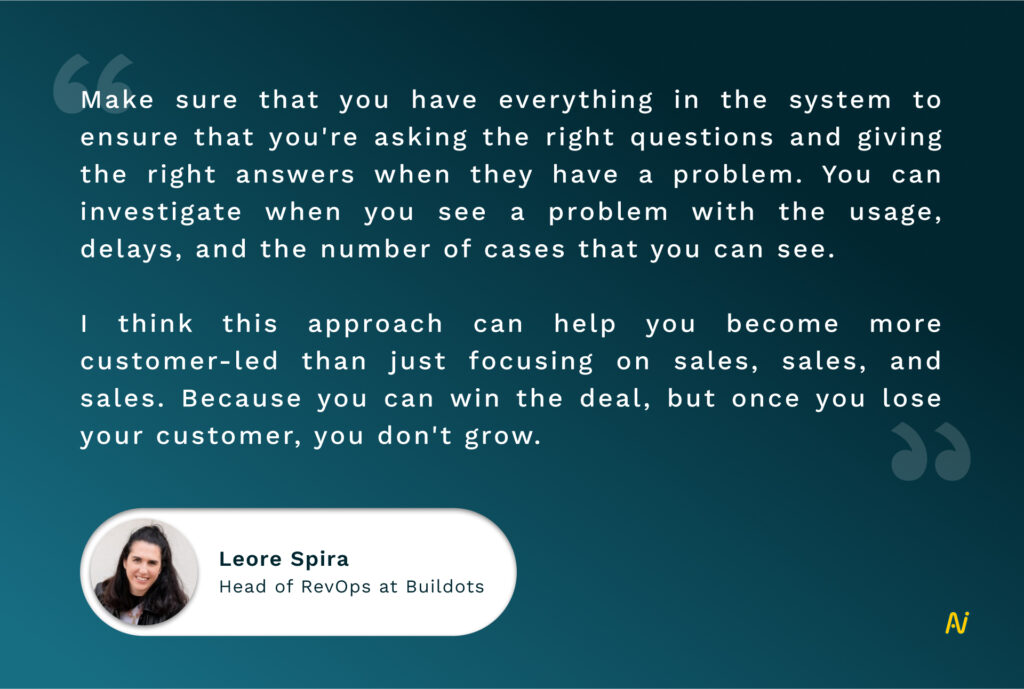
Buyer intelligence supports loyalty-building daily activities. These could be tasks that drive customer satisfaction with everyday usage.
CSMs can address frequent complaints comprehensively to:
- Reduce complaints
- Reduce call volumes
- Improve online ratings and reputation
- Ensure long-term success
Building loyalty plays a vital part in improving your customer satisfaction score. Buyer intelligence measures satisfaction so you know the impact your product has on the client.
It also boils down to more straightforward actions, such as checking unmet client needs before pushing for additional features or products.
If you’re at the early growth stage, collaborate with customers to foster future improvements. CSMs can gather feedback from customers to refine existing features and avoid discontinuing features that customers like.
Customers invest more (time and money) in you when customer success offers them timely resolution and innovation that furthers their growth.
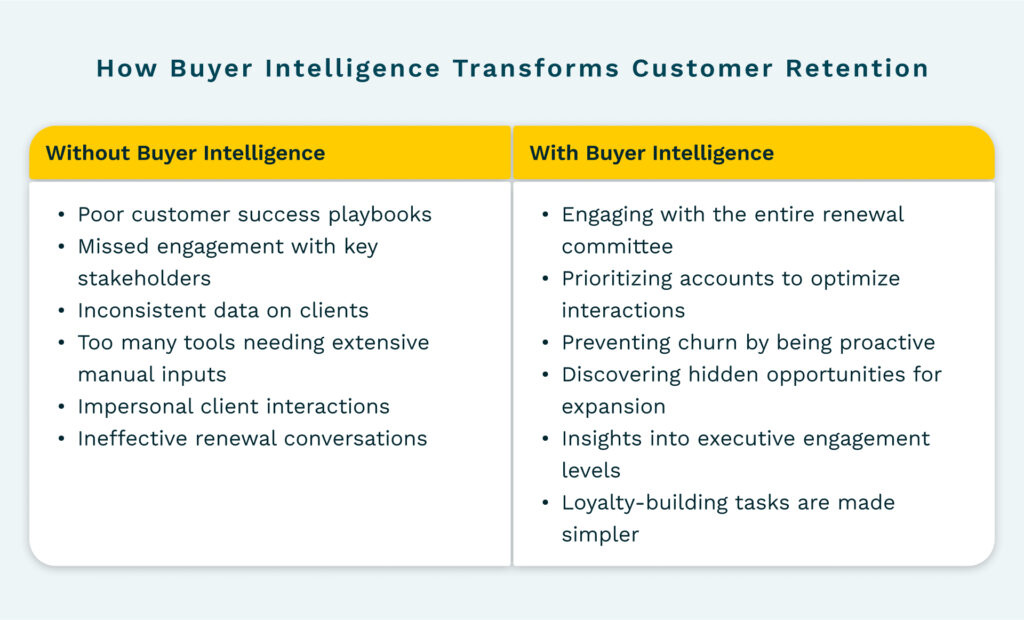
Leverage Buyer Intelligence for Consistent Customer Success
Buyer intelligence, when backed by clean data, can refine your customer success actions considerably.
You can avoid information overload on CSMs. Instead, they receive clear, concise, and actionable insights through B2B buyer intelligence.
Nektar’s “collect, consolidate, crunch” approach to data aims to retain customers by nurturing relationships. It provides insights into customers so you can:
- Automatically enrich contact and account-level activity data from multiple sources—meetings, emails, virtual messaging platforms (such as Slack and Microsoft Teams), and other GTM tools.
- Receive leading indicators on each account with prioritization suggestions. You can engage with the correct account and respective stakeholders at the right time.
- Monitor account engagement. Nektar shares alerts on single-threaded accounts as well as the next best action. CSMs can get to work on improving engagement with the entire renewal committee.
- Prevent churn risk and use relationship intelligence to spot backup champion(s).


